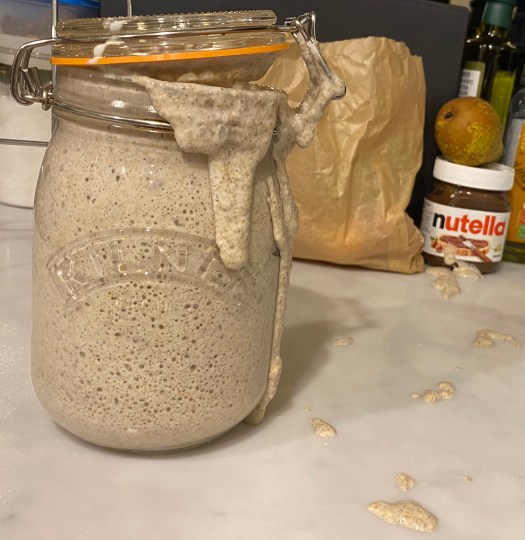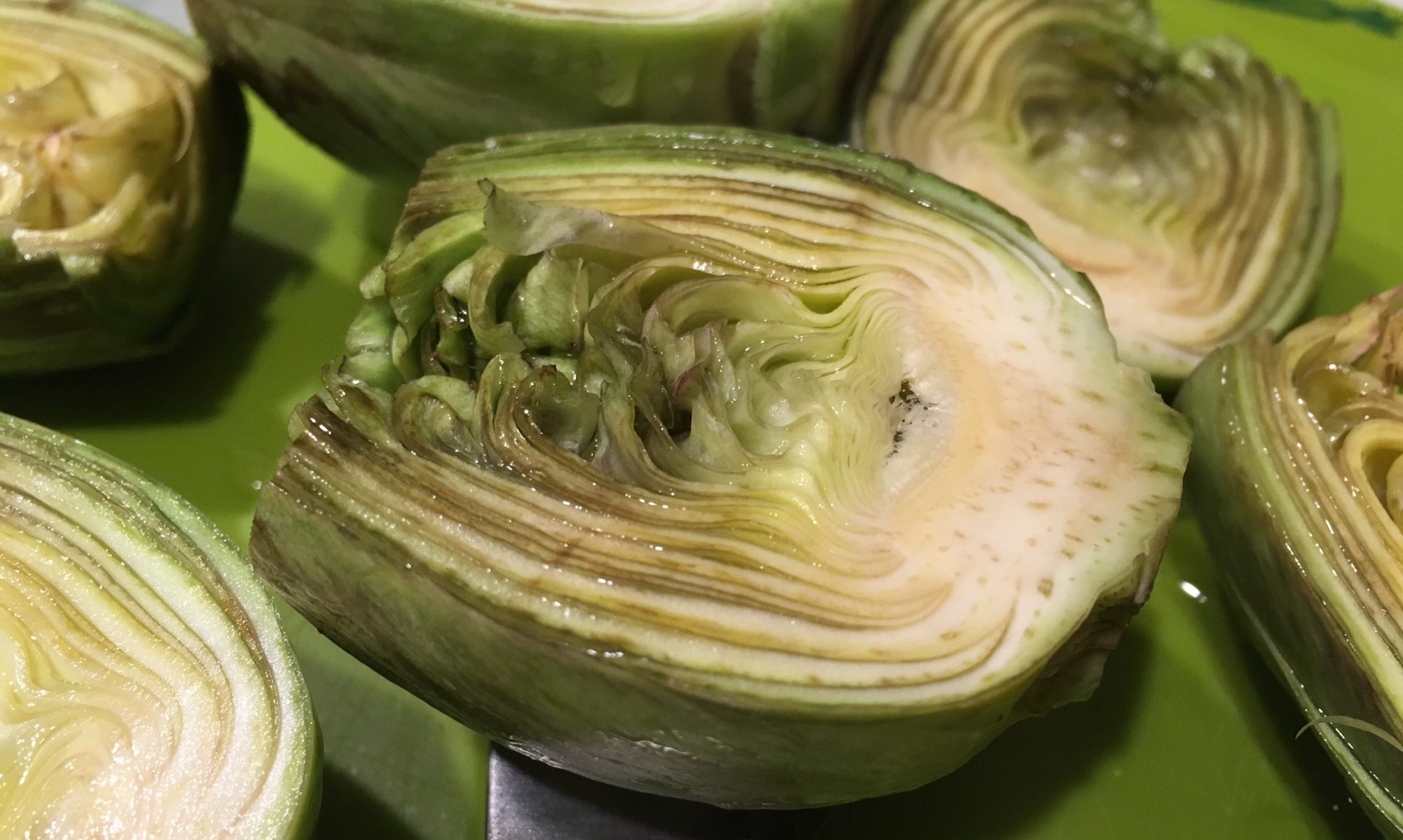Yesterday night, we were finishing dinner and then I started noticing something. Some sort of noise. I asked Devvers: “did you hear that?” No, nothing.
Of course I started suspecting it must be mice, because it’s London and because it’s getting cold, so it’s obvious it would be mice.
I entered the kitchen, already indignant with the mice for daring to be in the kitchen, making weird noises when we were around and the lights were on! The nerve of them!
But I didn’t see any mice. It was all clear.
And yet I kept hearing that weird, indeterminate sound. What was going on?
I looked towards the floor, trying to ascertain if these suspected mice had dug a hole in the floor? Perhaps a little nice mouse door in the wall, like in the Tom & Jerry cartoons?
Nothing! And the noise kept going… randomly.
Pffft… Squeeeprrrrt…. Pfft! Pffff…
And then I looked up, and I understood. I knew what the source was.
The sourdough starter!

It was burping and farting and starting to escape the Kilner jar in however way it could, and it wouldn’t stop, so I thought I’d open it before it leaked all over the counter. And…
POOOOOOOUFFFFFFMMM!!!
Out it went with a magnificent fart-burp, propelling itself all over the counter, the microwave, the fridge… Mysteriously (or fortunately), not on me, as I had the good judgment of opening it to one side.

It was as if someone had vomited. Except it didn’t stink! But it was equally labourious to clean up.
So how did I end up with such a violent starter?
This was actually a mix of two starters: the one Dan Lepard shared with us when I attended his sourdough masterclass, and my mongrel “craft beer kick-started” starter that I “created” during the early weeks of lockdown. I hadn’t used either in a while as I’ve been only used my rye starter recently while researching The Best Rye Bread Loaf recipe.
I thought that I could use half and half to make a “funky” ferment for my next loaf, and that way both starters would get refreshed.
So I mixed an equal quantity of each starter with water and Hodmedod’s rye flour, made a mark of the level with a black pen, closed the jar and left it on the counter, at room temperature, at about 8:00.
Our heating comes off at 8:00 too, so there would be a slight slow drop in temperature, but not too much because we’re around and it wasn’t that cold on that day either. There were very few, tiny bubbles on the jar for the most part of the day. Let’s assume the room temperature was around 20ºC.
At about 14:00 the bubbles started to get a tiny little bit bigger. At 16:00 there were a few bigger bubbles, but I sort of kept thinking they would just expand a little bit more and then come down, because the starter would be “dormant”.
At 18:00 the bubbles kept getting bigger, but there wasn’t a lot of extra volume over the mark. It all seemed under control.
We popped out to the shops at around 18:30—which is also the time the heating turns on. When we came back the starter level was a tiny bit higher, and the bubbles were bigger. Hmmm…
We prepared dinner, which obviously increased the temperature in the kitchen. Perhaps to 22ºC? 23ºC?
I still reckoned the starter was under control. It surely wouldn’t go over the top of the bottle while we were eating…
Well, I was clearly wrong!
I got some learnings out of this “experience”:
- never leave an active starter unattended 😂
- but if you must, don’t close the lid of the Kilner jar!
- or use an even bigger jar
The ultimate saving grace is that Kilner jars aren’t that hermetic. They do let pressure out. Which helps with not exploding (also useful when fermenting farty vegetables such as cabbage).
I think next time I might use a bowl and a shower cap in which to place the ferment. It should be safer: no sourdough “farts” and no mess to clean up afterwards!

